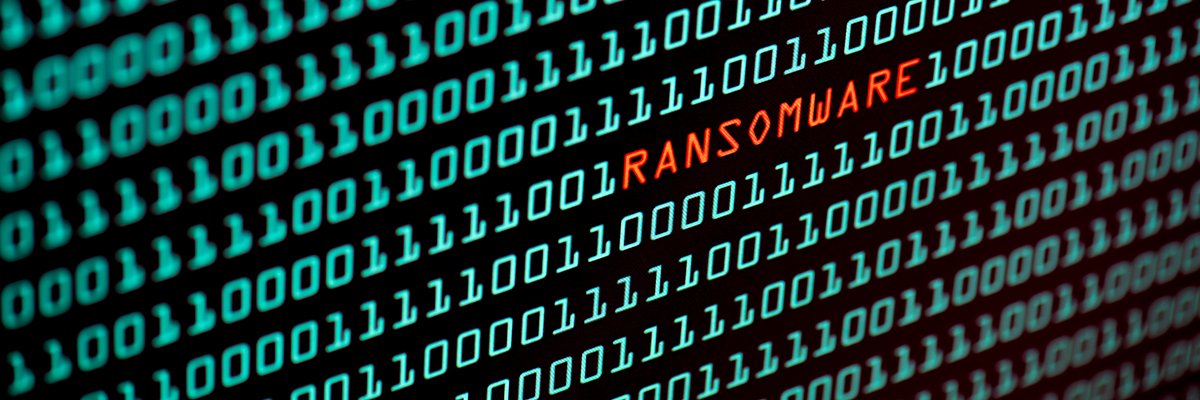
Coalition concerned over UK appointing ex-Amazon exec as antitrust regulator chair
techcrunch.com
A coalition of organizations and individuals have signed an open letter expressing concern at the U.K. governments decision to appoint a former Amazon executive as chair of the Competition and Markets Authority (CMA).The group, which includes U.S. tech outfits such as Yelp, DuckDuckGo, and Mozilla, says that the CMA must be free from political pressure if its to keep Big Tech in check and unlock positive economic outcomes for the whole economy.For context, the U.K.s antitrust regulator hasinvestigated Big Techfor all manner of contraventions, and alongside its counterparts in the European Union (EU) the CMA has played a role in keeping the major players of the tech world in check by blocking acquisitions and forcing divestments.However, the U.K. has sought to reposition itself as a pro-growth, pro-tech nation by cutting red tapeand bureaucracy. And as part of this, it seems, the government wants to make itself more attractive to outside investment by shaking up its antitrust unit.Last month, reports emerged that the U.K.s Department of Business and Tradehad ousted CMA chair Marcus Bokkerink, making way forDoug Gurr (pictured above) who worked in various roles across Amazons U.K. and Chinas business for nearly a decade. Gurr left Amazonin 2020to become director of the Natural History Museum.This government has a clear plan for change to boost growth for businesses and communities across the U.K.,Jonathan Reynolds, the U.K.s secretary of state for business and trade, said in a statement at the time. As weve set out, we want to see regulators, including the CMA, supercharging the economy with pro-business decisions that will drive prosperity and growth, putting more money in peoples pockets.Losing sightIts worth noting that Gurrs appointment is only on an interim basis for now. But it does signal the governments thinking in terms of the type of person its looking to fill the role someone with deep ties to Big Tech. In its announcement last month, the government said that Gurrs past at Amazon would enable him to bring a wealth of experience from his work in the technology sector.And this move has now spurred some two-dozen bodies to address a letter to several senior government ministers, including Reynolds and Chancellor of the Exchequer Rachel Reeves. That the signatories include DuckDuckGo, Yelp, and Mozilla reveals how smaller tech firms view Europe (including the U.K.) as a buffer to Big Techs global influence. Other organizations such as the Future of Technology Institute, Booksellers Association, Coalition for App Fairness, and the Open Markets Institute also put their names to the letter. Following the removal of the CMA Chair and his replacement with a former Amazon executive, we are worried that the UK Government is losing sight of its commitment to robust competition enforcement of the DMU [Digital Markets Unit] regime and the CMAs operational independence, the letter reads. Long-term, sustainable, and inclusive growth and innovation will not be achieved if the CMA is focused solely on the interests of the largest companies and is diverted from its core mandate to maintain and promote competitive markets.The CMAs Digital Markets Unit was set up specifically to tackle Big Tech, and the letters signatories note that this unit mustnt be compromised by political influence.The new DMU regime must be trusted by the government and independent of political pressure if it is to unlock positive economic outcomes for the whole economy, the letter says. Only then will Big Tech firms be compelled to have honest conversations with businesses and consumers about how to promote positive economic outcomes, rather than putting pressure on the regulator to water down the bold remedies required. In short, the DMU and the CMA will only be able to promote growth if they are truly operationally independent.The full text of the letter, and list of signatories, is included below.The Rt Hon Rachel Reeves MPChancellor of the ExchequerHM Treasury1 Horse Guards RoadLondonSW1A 2HQUnited KingdomCC: Rt Hon Jonathan Reynolds MP, Secretary of State for Business and Trade; Rt Hon Peter Kyle MP, Secretary of State for Science, Innovation and Technology; Baroness Jones of Whitchurch, Parliamentary Under-Secretary of State for the Future Digital Economy and Online SafetyDear Chancellor,We are a broad group of challenger and mid-sized tech companies, trade associations, civil society organisations, and experts that have long called for greater competition in digital markets through the new Digital Markets Unit (DMU) regime. Like the Prime Minister, we want to see the Competition and Markets Authority (CMA) take growth seriously. But sustainable growth and inclusive innovation will only be achieved by breaking down barriers to competition, not by leaving them standing.Following the removal of the CMA Chair, and his replacement with a former Amazon executive, we are worried that the UK Government is losing sight of its commitment to robust competition enforcement of the DMU regime and the CMAs operational independence. Long-term, sustainable, and inclusive growth and innovation will not be achieved if the CMA is focused solely on the interests of the largest companies and is diverted from its core mandate to maintain and promote competitive markets.The ex-ante powers in the Digital Markets, Competition, and Consumers Act (the DMCCA) are completely distinct from the CMAs other enforcement powers, such as the mergers regime, designed as they are to make tailored, targeted decisions to regulate a handful of firms with super competitive power. The new DMU regime must be trusted by the government and independent of political pressure if it is to unlock positive economic outcomes for the whole economy. Only then will Big Tech firms be compelled to have honest conversations with businesses and consumers about how to promote positive economic outcomes, rather than putting pressure on the regulator to water down the bold remedies required. In short, the DMU and the CMA will only be able to promote growth if they are truly operationally independent.The Labour Party has long supported the need for robust and urgent action to tackle monopolisation of the UKs tech sector, including during the passage of the DMCCA. We agree with you when you wrote that the new monopolies of platform capitalism like Google, Facebook, and Amazon [] exert a monopoly power over knowledge and information and block competitive markets. You were right to say that monopolies need to be broken up to ensure that markets are competitive.Since you wrote those words in 2018, little has changed in fact, the largest incumbent tech monopolies have gained strength, and are now leveraging their dominance to ensure a stranglehold in new markets. As established by the Furman Review, and multiple expert studies that have followed around the world, greater competition in digital markets, enforced by independent and impartial regulators, is the key to unlocking the governments core mission of economic growth, not a barrier to it. The CMAs independence must be rigorously defended if it is to pursue its mission in the face of aggressive lobbying from tech giants and other vested interests, whose sole aim is to defend the moats protecting their monopoly rents.If UK businesses are finally able to compete with Big Tech firms on a level playing field, this will unlock critical investment, innovation, and growth without limiting the ability of those companies to invest in the UK economy should they so choose. In fact, proper enforcement of the DMCCA will unleash growth across the UK economy.The CMA has shown that Apple and Google were able to earn over 4 billion of profits in 2021 from their UK mobile businesses above what was required to fairly reward investors. The regulator has also shown that the cost of digital advertising was 500 per household in 2019 or 14 billion overall far higher than it would be in a competitive market. Open choices, trust and transparency, and fair dealing will help UK companies thrive and give UK consumers a better, cheaper, and broader range of products and services. A more competitive and diverse digital economy will help ensure the benefits of new technologies are shared more widely, reduce the UKs dangerous dependencies, and give citizens much greater autonomy and choice over how they share information and interact with each other online.We note that in briefings to the press, government officials have stated that there has been frustration across the board from business regarding the CMAs performance, with the government hearing unhappiness from everyone. We would encourage the government to listen more closely to the hundreds of thousands of firms across the UK that have to do business in monopolised markets every day, and to properly scrutinise the funding and independence of lobby groups which claim to represent the interests of small businesses and startups in order to understand which groups are truly representative of the wider economy.Indeed, we remain supportive of the approach that the CMA has taken in recent years in developing the new pro-competition regime for digital markets, investigating harmful conduct by the largest incumbent tech firms, investigating mergers which risk fuelling concentration further, and building a world-leading team of digital and tech experts. It is an internationally respected regulator, not least due to its approach to digital regulation, which is now being followed around the globe.We hope that the government will use its forthcoming Strategic Steer to the CMA to reassert its commitments to the regulators operational independence and to the swift implementation of the new pro-competition regime for digital markets. We would welcome the opportunity to meet with you to discuss how we can work together to achieve this.Yours sincerely,Individuals:Professor Amelia Fletcher, CBE, University of East Anglia (Former Non-Executive Director, CMA; Member, HM Treasury Digital Competition Expert Panel Furman Review)Professor Derek McCauley, University of Nottingham (Member, HM Treasury Digital Competition Expert Panel Furman Review)Professor Philip Marsden, Bank of England (Member, HM Treasury Digital Competition Expert Panel Furman Review)Sir Vince Cable, former Secretary of State for Business, Innovation and SkillsOrganisations:ARTICLE 19Balanced Economy ProjectBooksellers AssociationCoalition for App FairnessDuckDuckGoEcosiaFoxgloveFuture of Technology InstituteGetYourGuideKelkoo GroupMinderoo Centre for Technology and Democracy at the University of CambridgeMozillaNews Media AssociationOnline Dating and Discovery Association (ODDA)Open Markets InstituteProtonPublic Interest News FoundationPPA (Professional Publishers Association)Reset TechResponsible Online Commerce CoalitionSkyscannerSociety of AuthorsWhich?Yelp
0 Comments
·0 Shares
·34 Views











